Walking through the Topography of Terror in Berlin, I realized I was on the very ground where the Nazi SS and Gestapo once plotted and executed their horrific crimes. The outdoor exhibition sits right where the old Nazi headquarters stood, blending haunting remnants of history with clear, impactful displays.
This site lets you get close to how the Nazi regime functioned and how its actions rippled through Berlin, Europe, and beyond.
Inside the museum, I found detailed exhibits about the SS, police, and the Holocaust. The way everything is laid out feels honest, sometimes even blunt.
The information hits hard, and the scale of it all is impossible to ignore. My visit was tough, emotionally, but it mattered—it offered lessons that still ring true today.

Historical Significance of the Site
The Topography of Terror stands on ground once occupied by some of the most infamous Nazi institutions. This spot in Berlin became the center of Nazi control, persecution, and violence during the Third Reich.
Gestapo and SS Headquarters
Stepping onto the grounds, I learned this was home to the Gestapo and SS headquarters from 1933 to 1945. Both organizations enforced Nazi policies and kept the regime’s grip tight across Germany.
The Gestapo, or Secret State Police, tracked, arrested, and deported those who opposed the Nazis. Their offices lined Prinz-Albrecht-Strasse, where decisions changed millions of lives.
The SS, led by Heinrich Himmler, enforced racial policies and ran the concentration camps. Together, these groups relied on fear and intimidation to silence dissent.
Being here, the weight of history is almost physical—every step brings the reality of National Socialism closer.

The Reich Security Main Office
This site also housed the Reich Security Main Office (Reichssicherheitshauptamt), a core part of the Nazi security system. This office merged the SS, Gestapo, and other police agencies, turning the area into the nerve center of Nazi intelligence and security.
Reinhard Heydrich headed the Reich Security Main Office and managed surveillance, information gathering, and crushing opposition. Their reach extended far beyond Berlin, touching every corner of Nazi Germany and occupied Europe.
Orders for mass arrests, exterminations, and the Final Solution came from right here. The bureaucracy enabled systematic crimes on a scale that’s still hard to grasp.

Role During Nazi Germany
This site’s role during Nazi Germany wasn’t just administrative—it was the heart of World War II atrocities. Key officials plotted the persecution of Jews, Roma, political enemies, and so many others from these buildings.
Much of the Holocaust’s planning started at these desks. Orders sent to secret police, SS units, and death squads across Europe often began here.
It’s chilling to imagine the level of control exerted from this spot in Berlin. The terror that radiated from these headquarters reached millions, as news of Gestapo arrests or SS operations kept people in constant fear.

Postwar Transformation
After 1945, air raids left the original buildings in ruins, and demolition wiped out what was left. For decades, this place was just a wasteland—a scarred reminder of Berlin 1933–1945.
Only fragments survived, like sections of the original Berlin Wall.
Eventually, Berliners recognized the area’s historic weight. Excavations uncovered the Gestapo’s in-house prison foundations, which are now marked and protected.
Today, the minimalist documentation center keeps the focus on history, not architecture.
I value how the transformation into the Topography of Terror memorial lets visitors learn about the past right where it happened. Both the outdoor and indoor exhibitions ensure these crimes are studied and remembered.
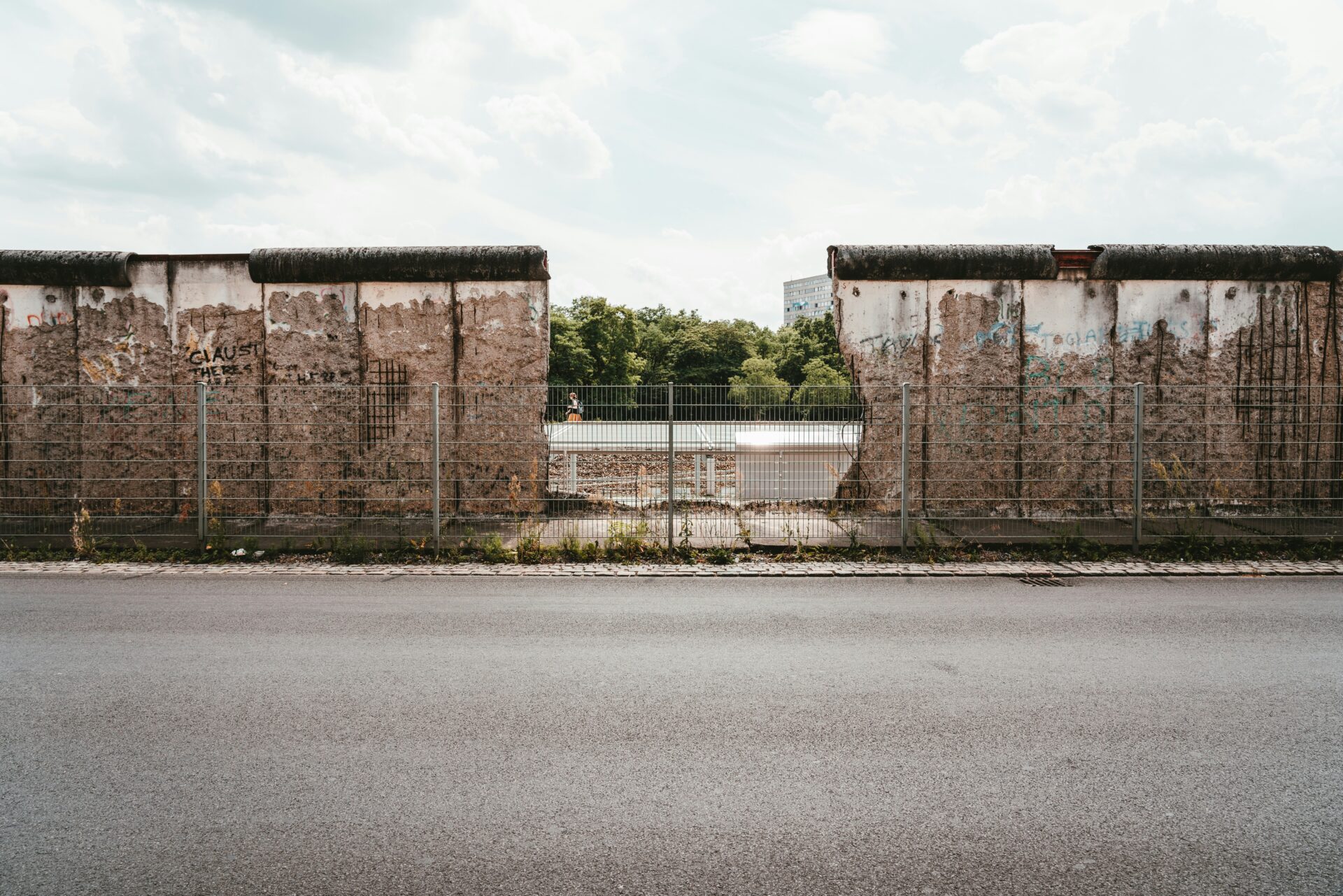
Outdoor Exhibition and Memorial Features
Visiting the outdoor exhibition at the Topography of Terror gave me a raw sense of Berlin’s turbulent history. The mix of historic remains and informative displays creates a place that’s both reflective and deeply moving.
The layout ties the former Nazi headquarters to the scars left on Niederkirchnerstraße and the surrounding area.
Exhibition Trench
The exhibition trench is a long, open walkway that traces the site’s boundary along Niederkirchnerstraße. Large panels line the path, offering a timeline from the Nazi era through Allied bombing and the aftermath for Berliners.
Each station tells a different story using historic photos, maps, and personal accounts.
The panels don’t hold back—they show exactly how the Gestapo, SS, and Reich Security Main Office used the area. Details about propaganda and crimes sit alongside short bios and quotes from victims.
Walking the trench, it was easy to connect the images to the ground beneath my feet. The open-air design means you can move at your own pace, pausing whenever something grabs you.
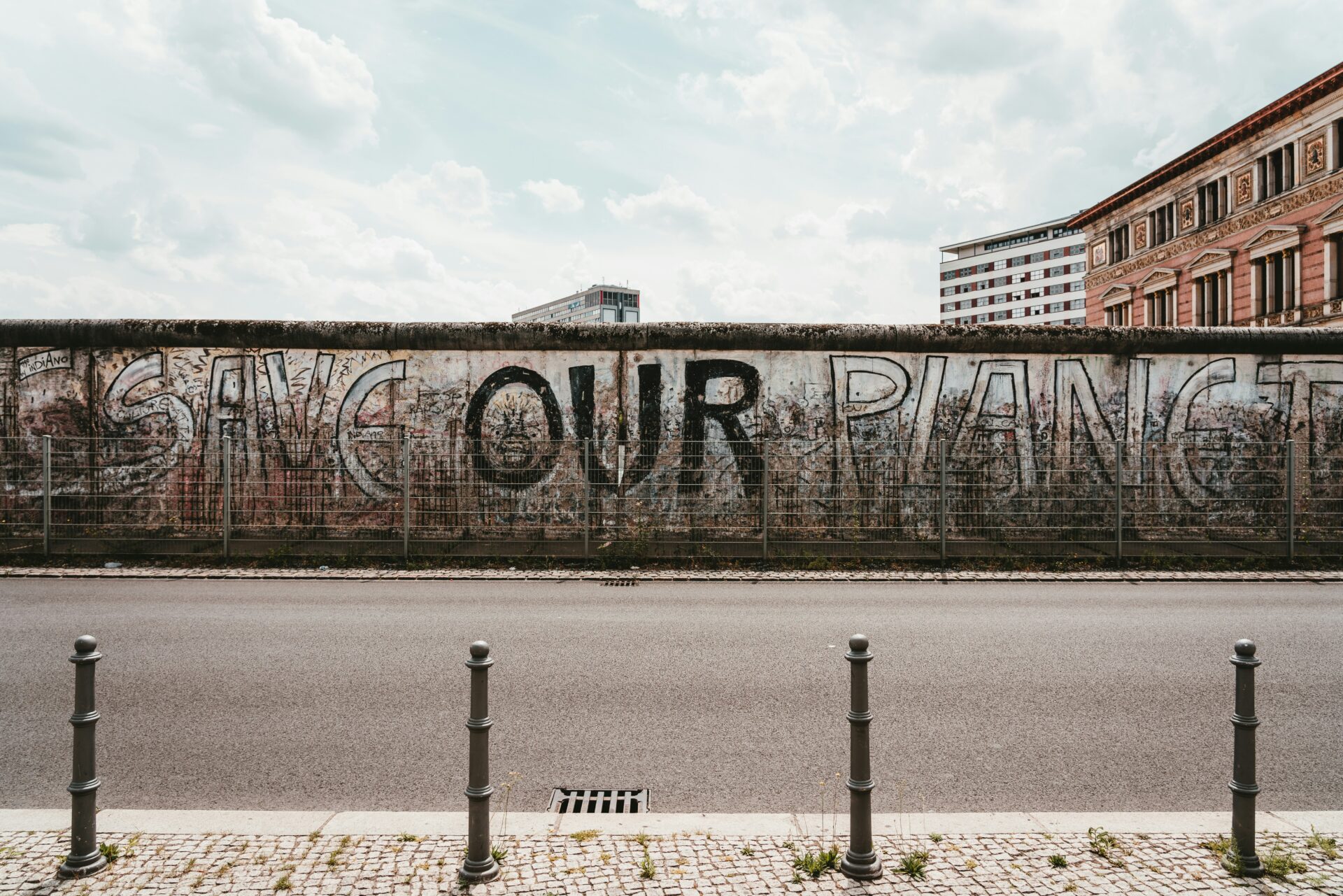
Remnants of Nazi Architecture
Only foundations and low remnants mark where the Nazi regime operated. Not much survived above ground—Allied bombs and later demolition saw to that.
Gravel covers the memorial area, outlining the old Gestapo “in-house prison.”
I could see where people were held, interrogated, and tortured. Informational signs mark the exposed foundations.
These remnants help visitors picture the buildings’ size and layout. Walking here, I felt a real sense of place—these traces are silent witnesses to dark history.
It’s striking how even ordinary spaces can carry heavy memories.

Berlin Wall and Surroundings
A section of the Berlin Wall still stands along the site’s edge, acting as a visual boundary between past and present. This piece is original, battered by time and covered in graffiti.
Through breaks in the wall, you can see government buildings, including the former Ministry of Aviation.
The wall ties the Nazi era to later decades, showing how different regimes left their stamp on Berlin. The outdoor area blends these historic layers, so visitors experience the site’s full significance as they walk.
Quiet benches invite you to pause, while the preserved wall and displays highlight how much the city has changed—and what still lingers.
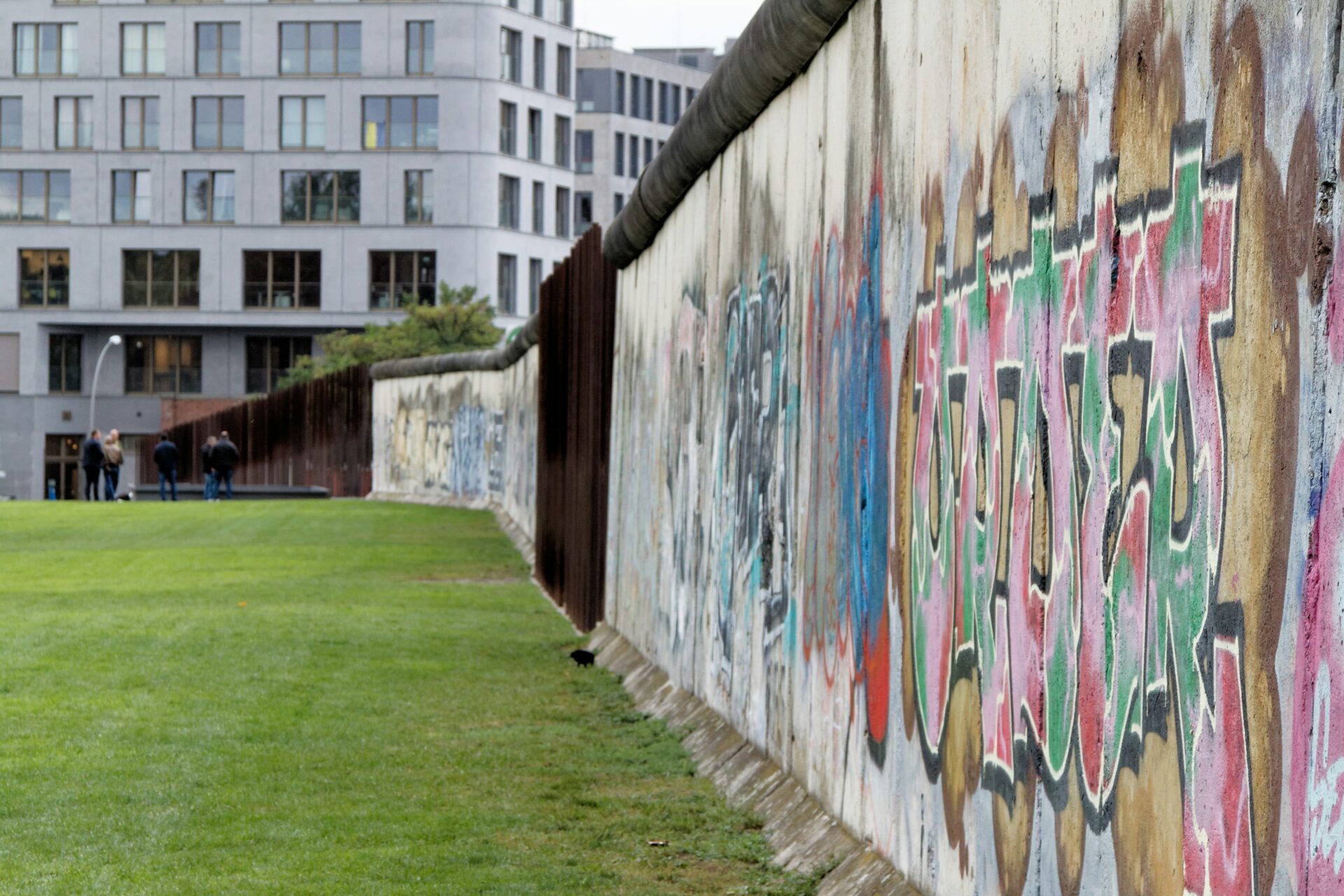
Indoor Documentation Centre and Permanent Exhibits
Inside the documentation centre, the focus shifts to evidence and education. Every display aims for clarity, using real documents, big photographs, firsthand testimony, and straightforward layouts.
Permanent Exhibition: Berlin 1933–1945
The main exhibition, Berlin 1933–1945: Terror and Persecution, traces how Nazi authorities used power and violence in Berlin. It walks you step by step from the Nazis’ rise in 1933 to the end of World War II.
Text, images, and maps show where groups like the SS and Gestapo planned their crimes.
The timeline covers the years of dictatorship and war, ending with liberation in 1945. Each year, key events and new laws are explained simply.
Panels detail the main offices, including where the Gestapo, SS, and Reich Security Main Office operated on this site. Maps and old plans help make the events here feel concrete.

Archival Documents and Photographs
Original documents and photographs fill the exhibition. Many are large and easy to study up close.
Some documents are copies, but plenty are originals—letters, orders, ID cards, and police files that bring the stories to life.
Captions keep things clear. Short explanations next to every photo or document tell you what you’re looking at, including dates and names.
Charts and graphics break down statistics and policies in visual ways.
In some areas, display cases hold evidence from Gestapo and SS offices. Small items like badges or armbands make the history feel immediate.
Seeing handwriting and official stamps made everything more real, somehow.
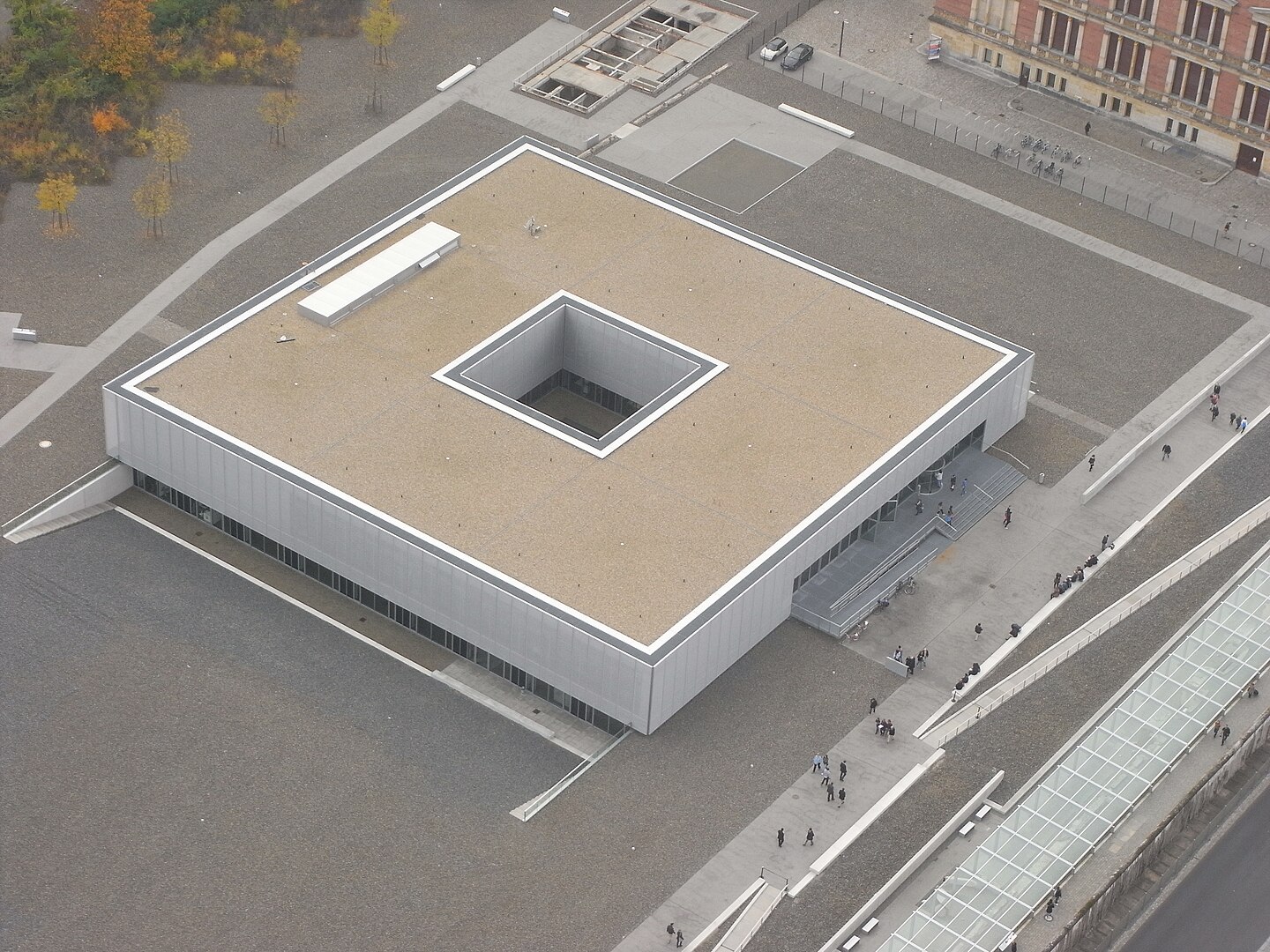
Exhibits on Atrocities and Persecution
A big part of the indoor exhibition covers what happened to specific groups. Panels discuss the persecution of Jews, Roma, Sinti, political opponents, and others.
Direct quotes from survivors and officials appear in bold, and the details of Nazi crimes—deportations, forced labor, torture—are shown with numbers and personal stories.
Short case studies focus on individuals and families. Some displays show news articles, wanted posters, and secret police reports to explain how persecution worked at every level.
Multimedia displays blend sound and image, letting you hear testimony or watch documentary clips. The section covers both the big picture and acts of resistance or survival, sticking to facts and real accounts.
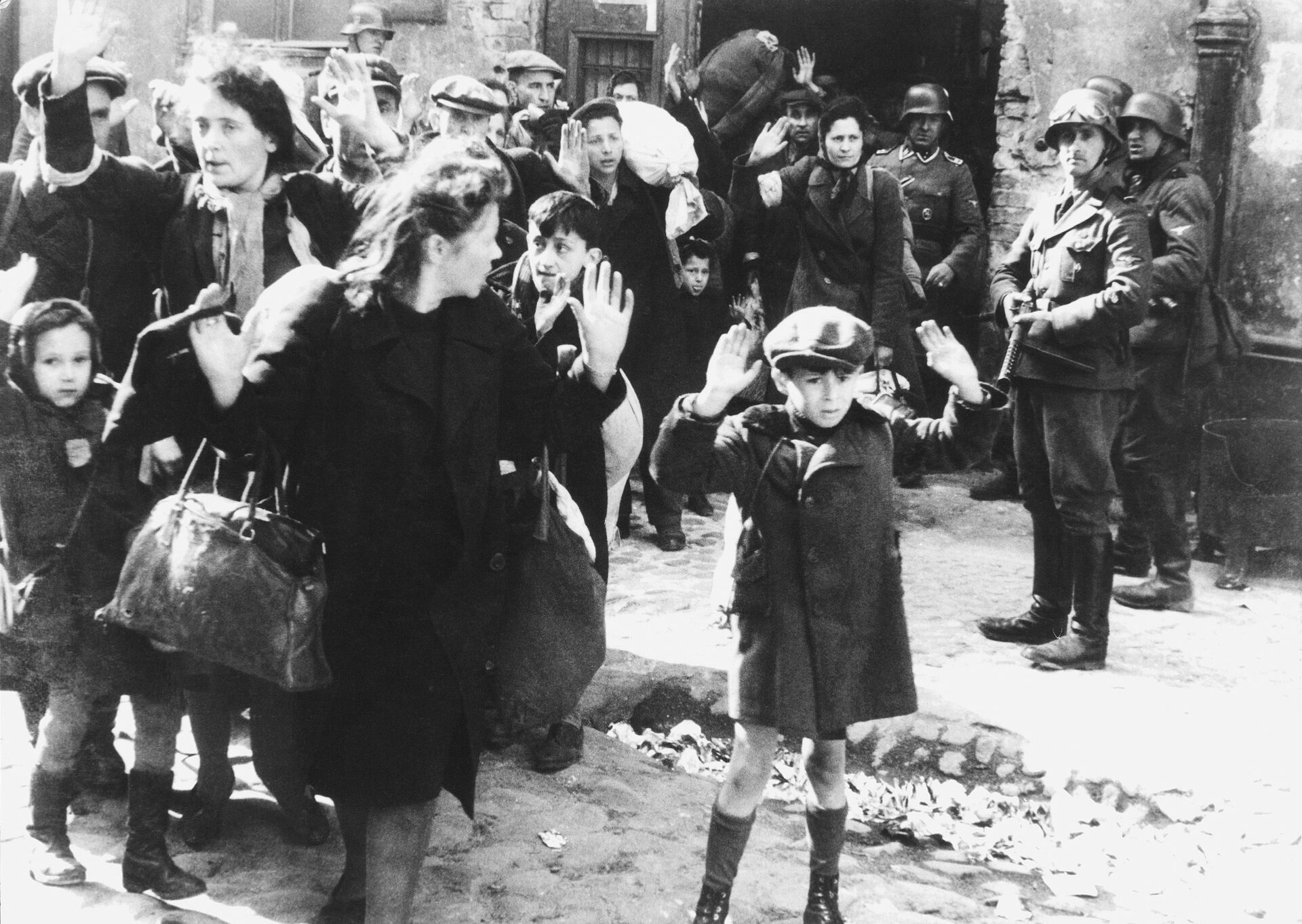
Audio Guides and Information Stations
The documentation centre offers audio guides in several languages. I used one as I walked, and it added stories, interviews, and commentary that deepened my understanding.
Interactive information stations with touchscreens let you see more photos, zoom in on documents, and explore details at your own pace.
Many include maps and short biographies of both victims and perpetrators. Some play survivor interviews or show timelines of key events.
The mix of audio and visuals helped me grasp not just what happened, but why it matters.

Themes of Terror, Persecution, and Remembrance
During my visit, I saw how Nazi terror worked through specific institutions and methods. The exhibitions show how systematic persecution, propaganda, and violence shaped the lives of millions.
Persecution of Political Prisoners
The Topography of Terror highlights what happened to political prisoners under National Socialist rule. From 1933, the Gestapo and SS targeted anyone they saw as an enemy.
Political opponents—communists, social democrats, and others—were among the first arrested. Many ended up in early concentration camps like Dachau and Sachsenhausen.
Key facts:
- Gestapo headquarters cellars often served as interrogation sites.
- Torture and forced confessions happened regularly.
- Families rarely learned what became of their loved ones.
Personal testimonies, letters, and photos bring these stories to life. The displays emphasize that persecution was systematic and driven by orders from above.

SS and Police Role in Atrocities
The exhibition makes it clear how central the SS (Schutzstaffel) and police were. The buildings here once housed the Reich Main Security Office, the core of Nazi security operations.
SS and police did the following:
- Organized mass arrests and deportations
- Managed concentration and extermination camps
- Carried out mass shootings in Eastern Europe
Officers followed strict structures and orders. Photos, commands, and original documents show how decisions led to violence.
The section exposes the bureaucracy of terror. Not just top leaders, but middle managers often ran deadly operations.
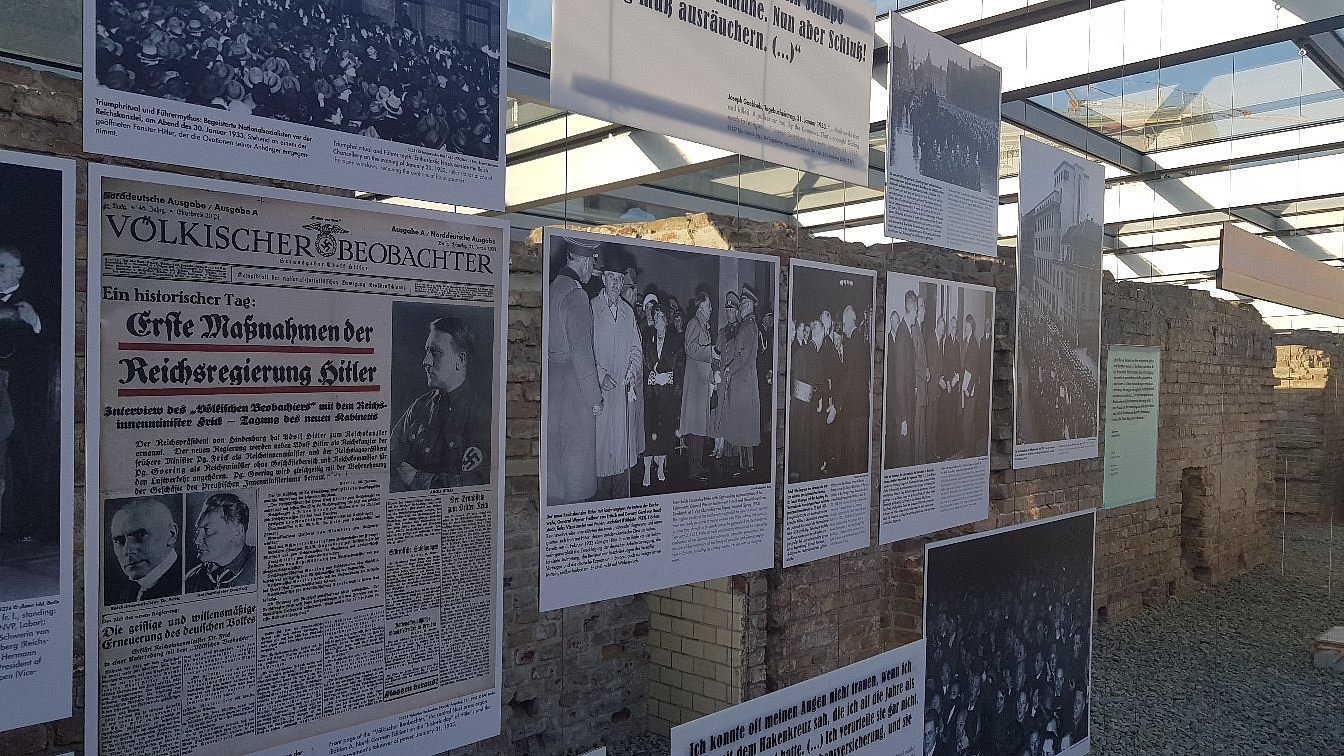
Impact of National Socialist Propaganda
Propaganda played a huge role in justifying terror and controlling people. The museum shows how National Socialists spread their ideas through posters, films, and speeches.
Examples of propaganda:
- Dehumanizing political enemies and minorities
- Promoting SS and police as Germany’s protectors
- Using fear to win public loyalty
I saw samples of newspapers and radio broadcasts used to stir up hatred and silence dissent. Even school textbooks and children’s books carried racist messages.
Propaganda was everywhere—at work, at home, on the streets. It turned ordinary people into supporters or silent witnesses of state violence.

Holocaust Education
The Topography of Terror really puts Holocaust education front and center. The exhibits dive deep into both the planning and the harsh, everyday reality of the genocide targeting Jews, Roma, and other persecuted groups.
A few of the standout topics:
- The Wannsee Conference and their chilling “Final Solution” plans
- What life and death looked like in concentration and extermination camps
- The involvement of the SS, police, and even ordinary civilians in carrying out genocide
Maps, survivor stories, and stark statistics bring home just how far-reaching the Holocaust was. Special displays focus on remembering the six million murdered Jews as individuals, not just as a statistic.
This part of the museum really hits me—it forces me to confront what happens when people stay indifferent. Remembrance and learning feel more important than ever here.

Visitor Information and Practical Details
When I visited the Topography of Terror, planning a bit ahead honestly made things much easier. Simple things like knowing the opening hours, tour options, and what’s nearby helped me make the most of my day.
Opening Hours and Accessibility
The Topography of Terror stays open almost every day. Usually, you can explore the exhibitions from 10:00 AM to 8:00 PM. They only close on December 24th and 31st, so keep that in mind if your trip falls around the holidays.
Admission doesn’t cost a thing. That’s a huge plus, since it means anyone can visit, regardless of their budget.
Wheelchair access is solid here, both inside and outside. Ramps, wide paths, and accessible restrooms are available. Elevators and step-free entry points help visitors with limited mobility get around without hassle.
Most info panels and displays come in German and English. Some guides and handouts are in other European languages, which definitely helps international guests like me follow along.

Guided Tours and Audio Guides
Guided tours run several times a week, in both German and English. I found these tours super helpful for putting the history in context and answering those tricky questions that always pop up. Group tours are available too, but you’ll want to book those in advance if you’re coming with a school or a big group.
If you’d rather go at your own pace, you can rent an audio guide for a small fee. These come in English, German, French, Italian, and a few others.
The information desk sits right at the entrance. Staff there can tell you about tour times or help you sign up for one. The tours cover both the indoor and outdoor exhibitions, so you get the full story.
If you’re the type who likes to dig in deeper, printed booklets are available for purchase. I grabbed one to look over later, and it’s a good resource.
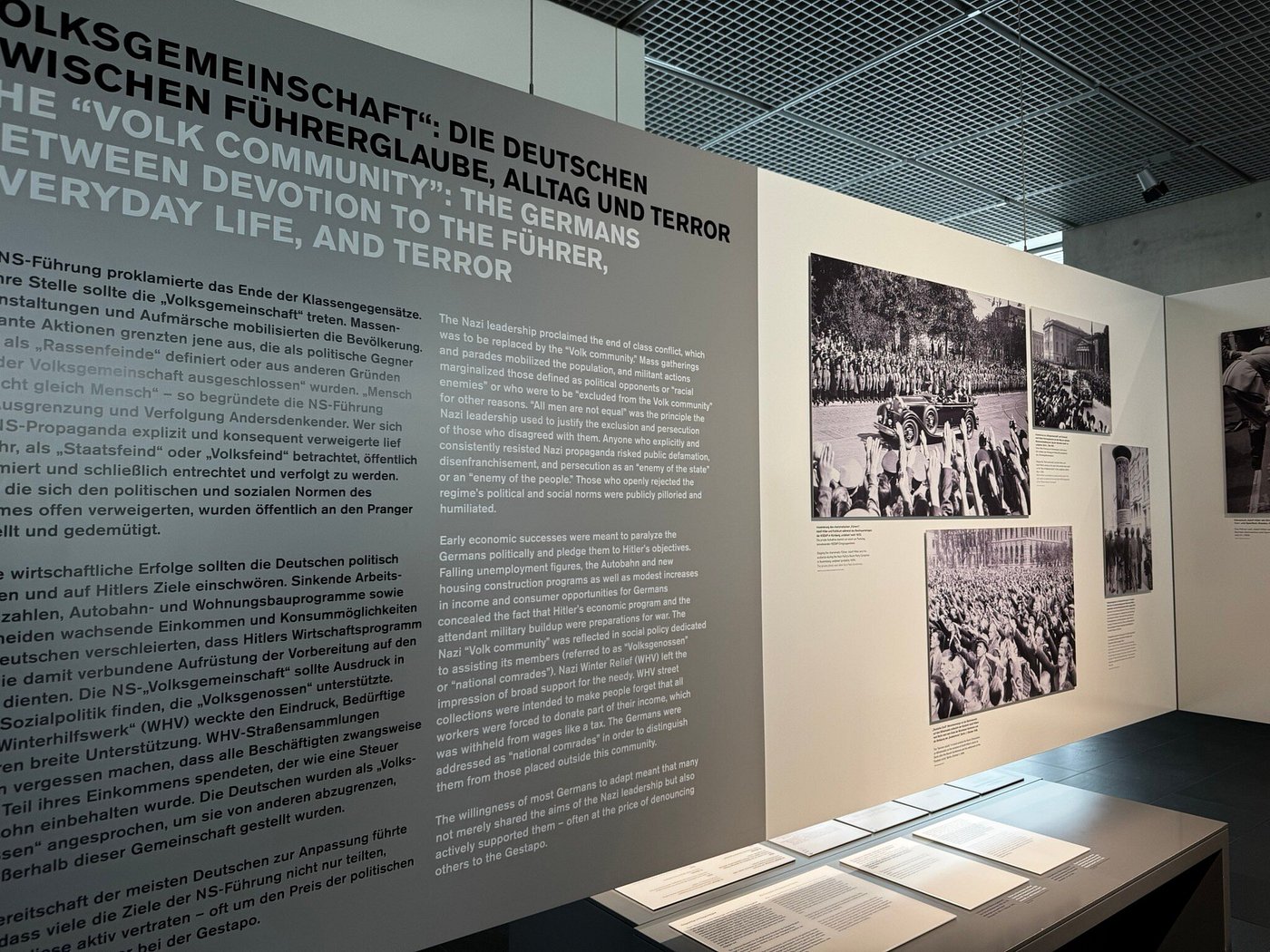
Special Exhibitions and Events
On top of the main exhibitions, the Topography of Terror puts on special exhibitions throughout the year. These might focus on the Holocaust, resistance movements, or what happened after the war. Some even explore the SS and Gestapo’s reach beyond Germany.
Temporary events—like lectures, panel talks, and workshops—pop up regularly. I checked the center’s website before my visit to see what was on. Most events are free, but you sometimes need to register ahead since space can be tight.
Special exhibitions are set up in a separate area, so you can see them without missing the main displays.
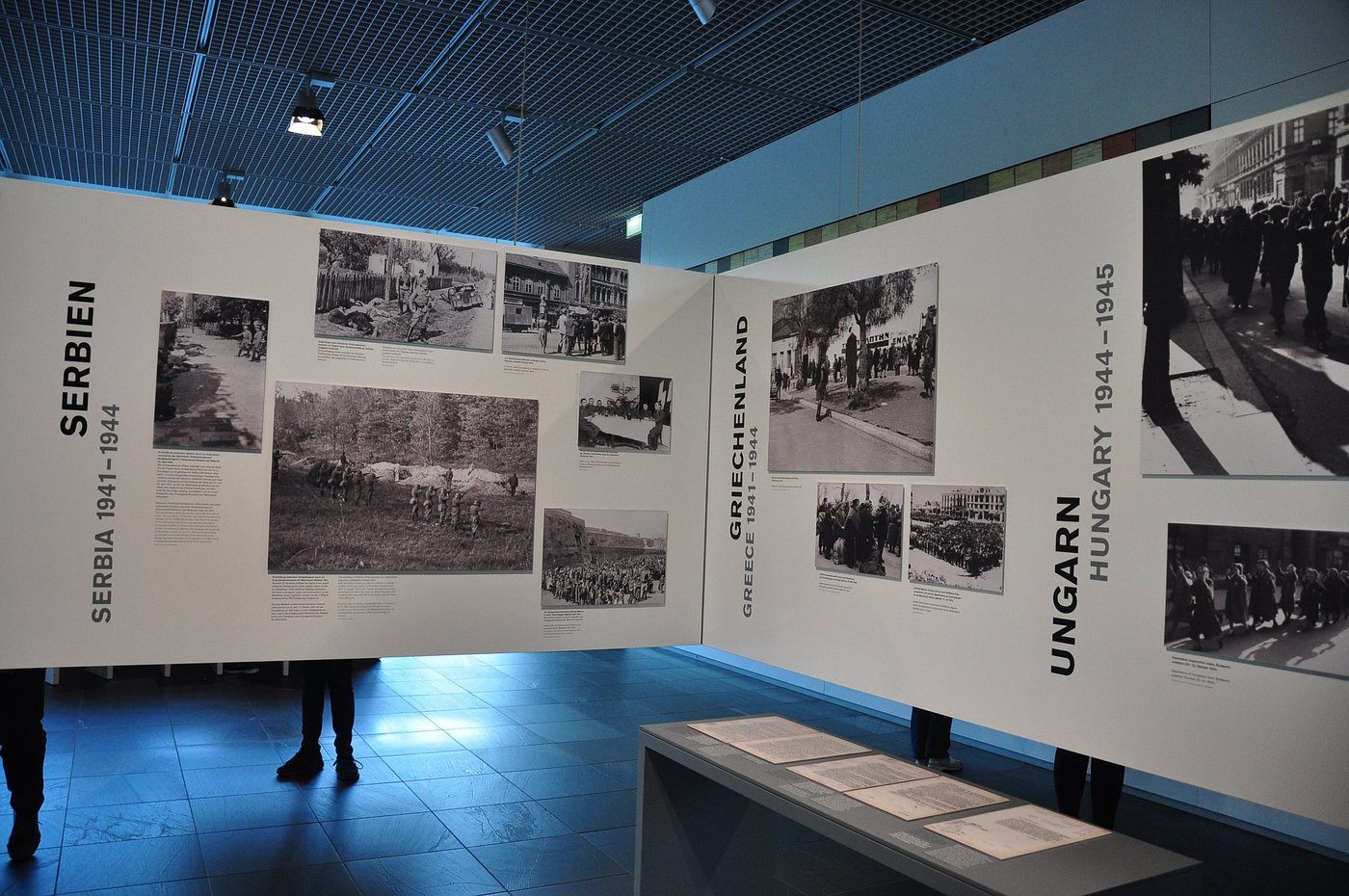
Nearby Landmarks and Points of Interest
The Topography of Terror sits right in central Berlin, making it easy to combine with other famous sites. The museum stands on the former Nazi SS and Gestapo headquarters site. Right next door, I found one of the longest preserved sections of the Berlin Wall—it’s open for everyone to see.
Checkpoint Charlie is just a short walk away. Adding this historic crossing point to your itinerary is a breeze. Other spots nearby include Potsdamer Platz and the Jewish Museum Berlin.
Plenty of cafés, restaurants, and shops are within walking distance. That makes it easy to grab a bite or take a break after the exhibition. I also noticed clear signs and public transport stops close by, so getting to the site from anywhere in the city is straightforward.
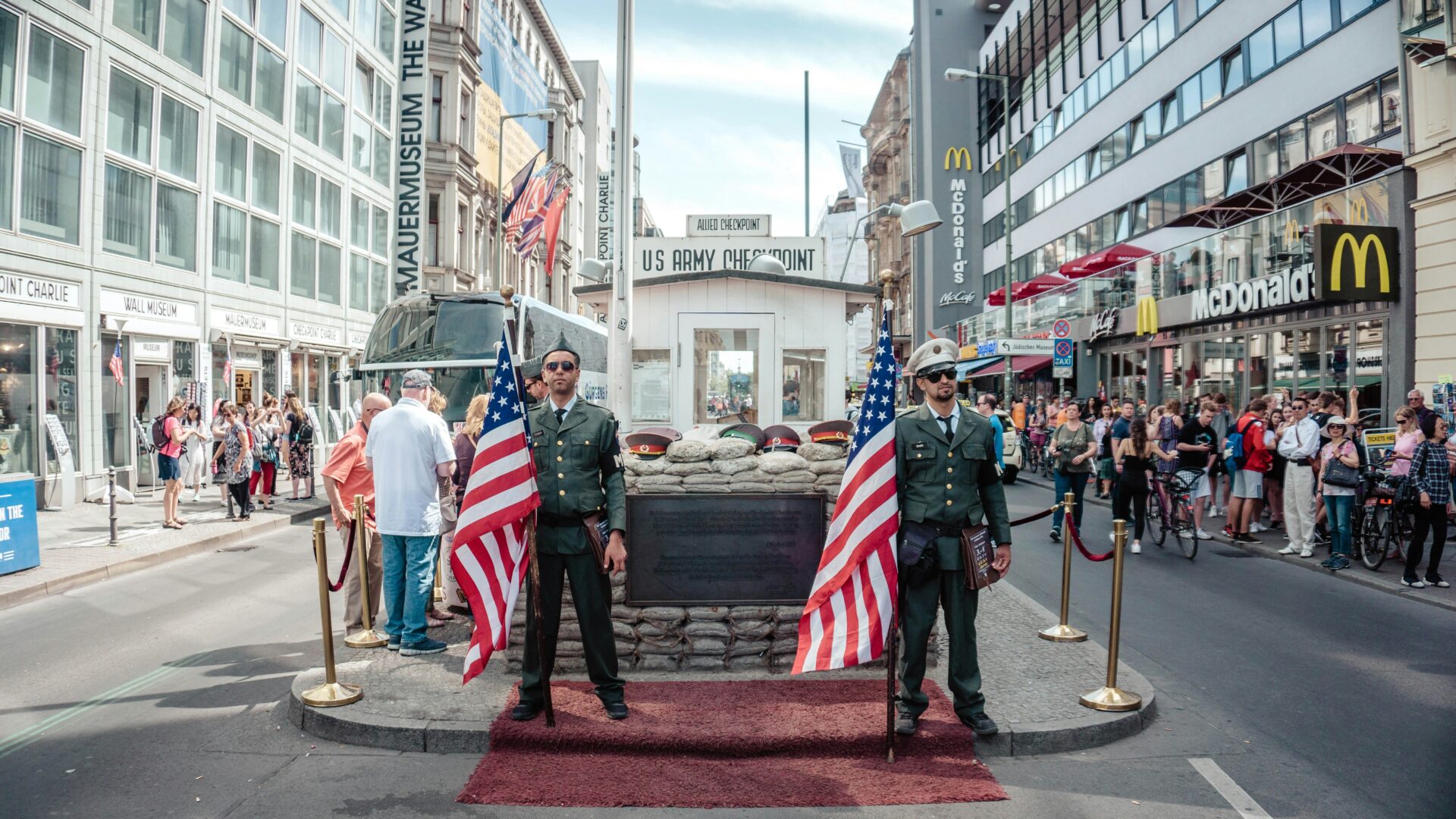
Related Sites and Educational Resources
Berlin has several places where you can dive deeper into the history and impact of Nazi rule. Each spot helps reveal a different angle on how people were affected and how Berlin remembers its past.
Nazi Forced Labour Documentation Centre
The Nazi Forced Labour Documentation Centre sits in Berlin’s Schöneweide district. It’s built on a former forced labor camp that once held thousands deported from across Europe.
The center uses original buildings, personal stories, and old photos to show what forced laborers went through. I found it eye-opening—learning how forced labor became a backbone of the Nazi war machine.
Documents and guided tours explain how millions, including prisoners of war and camp inmates, were exploited. The center compares different camps and industries, which really helped me grasp just how big this system was.
Workshops for students and teachers encourage critical thinking. Resources come in several languages. Survivors and their families work with the center to make sure real voices are heard.

Connections to Other Memorials in Berlin
While exploring the Topographie des Terrors, I noticed how Berlin’s memorials connect through both subject and location. The Memorial to the Murdered Jews of Europe—better known as the Holocaust Memorial—is just a short walk away. Its field of concrete slabs creates a somber, powerful effect.
The German Resistance Memorial Center stands out too, telling stories of those who stood up to Hitler’s regime. Smaller memorials, like the Jewish Museum Berlin and the Memorial to the Sinti and Roma of Europe, add more layers to the city’s story.
Maps and signs at Topographie des Terrors point you toward these places and explain how they’re linked. Together, these memorials offer countless ways to explore the consequences of Nazi rule. You can piece together a more complete story of Berlin’s complex history.

Educational Initiatives and Partnerships
The Topography of Terror Foundation teams up with schools, researchers, and all sorts of community groups. One thing I really appreciated—they aim to make historical facts accessible, not just for scholars but for anyone curious enough to visit.
I stumbled upon brochures, podcasts, and downloadable materials designed for pretty much every age group. There’s something about having options that makes learning feel a bit more approachable, don’t you think?
You can join guided tours in several languages. The staff also bring in historians and witnesses for public discussions, which adds a layer of realness that’s hard to get from just reading plaques.
The foundation puts together temporary exhibitions, pulling in information from archives and international partners. This keeps things feeling fresh—there’s usually something new to see or learn each time you visit.
They run joint programs with places like the Nazi Forced Labour Documentation Centre and other museums. These partnerships let students visit multiple sites and see history from different angles.
Honestly, I found the mix of resources helpful, whether you’re just popping in out of curiosity or diving deep as a researcher. It’s a rare spot where you can learn at your own pace, and somehow, it never feels overwhelming.

